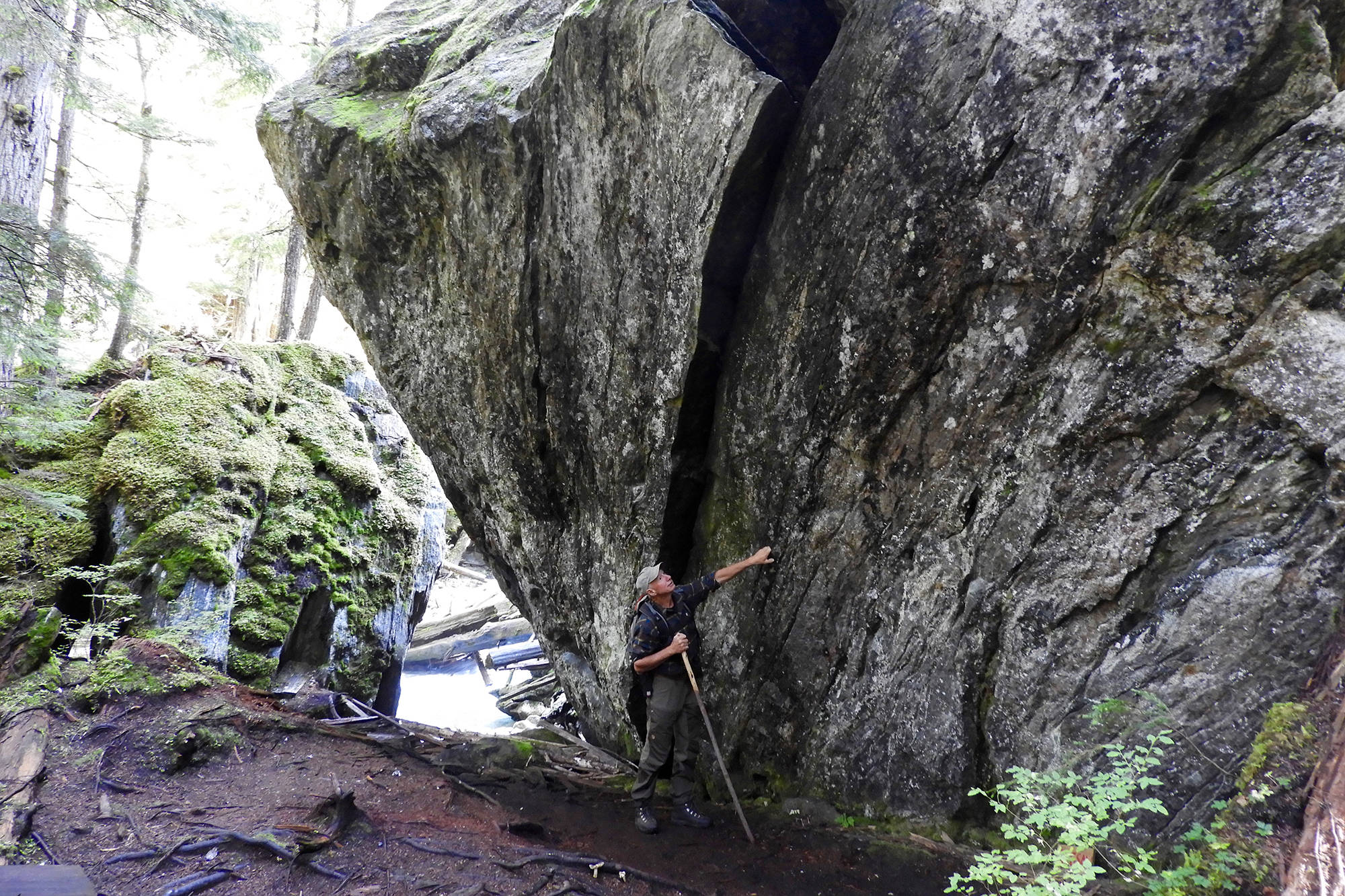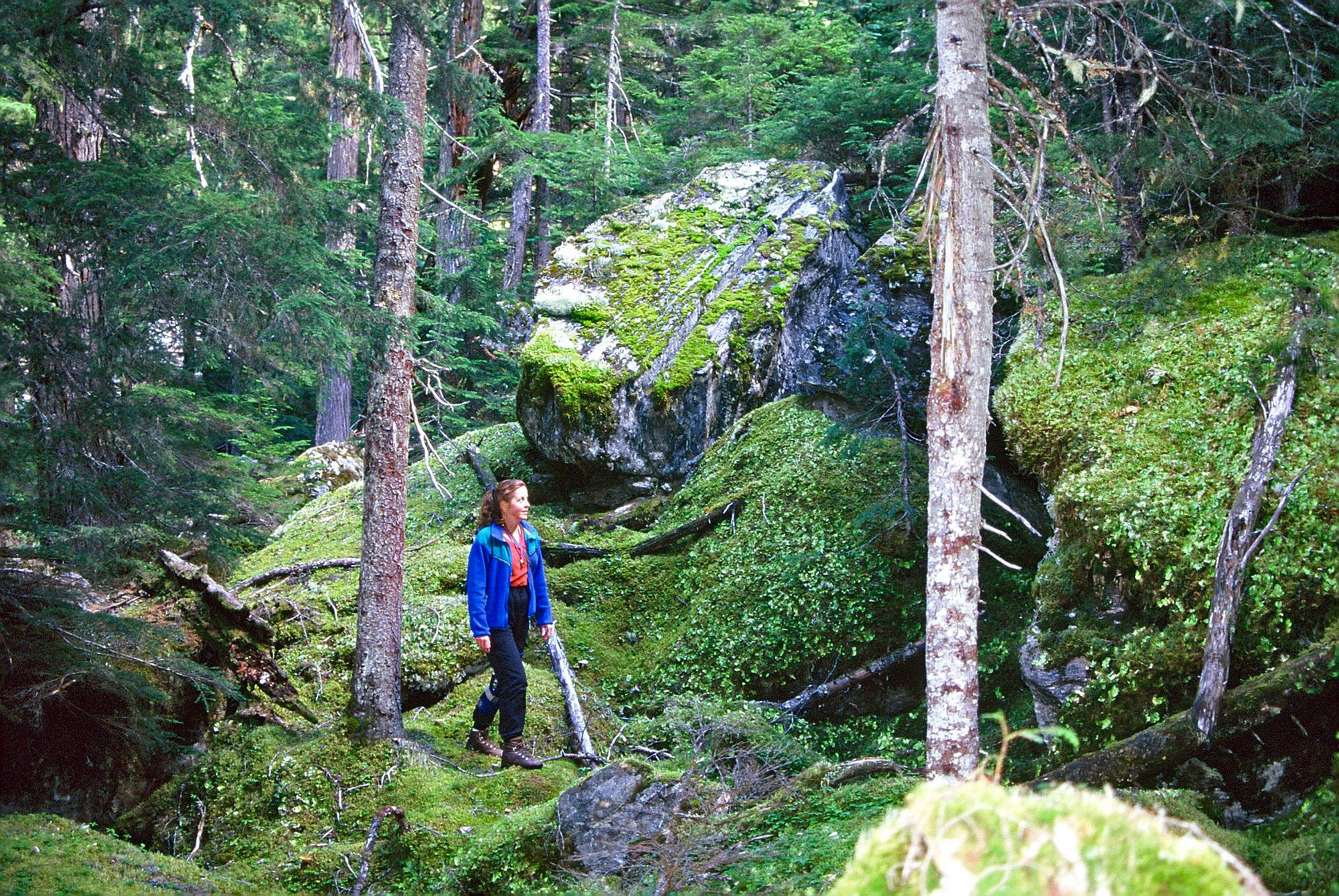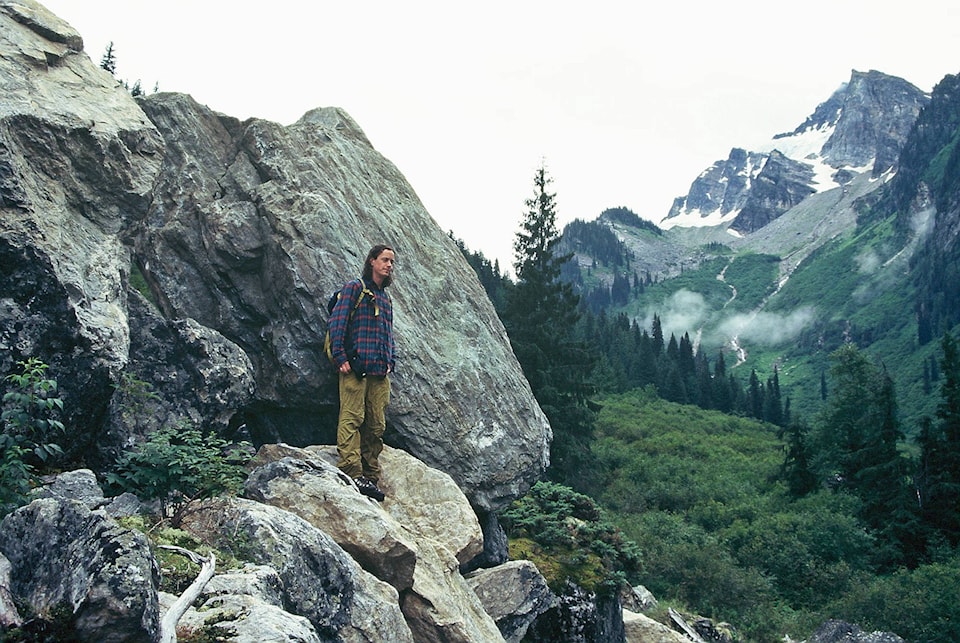By Jim Cooperman
Contributor
The following column is the first of a two-part series.
It had been 25 years since the last time I visited one of the truly magical areas in the Shuswap, the English Creek valley southeast of Three-Valley Gap.
Two intrepid local adventurers, Blaine Carson and John Vivian, joined me recently for the tour into a landscape fitting for the imaginary world of the Hobbits, on a 1.3-kilometre long trail along English Creek that winds around massive boulders covered in thick moss underneath giant old growth cedar and hemlock trees.
Amidst the wonder, we found small signs that designated climbing routes, as this valley had also become a destination for the sport of bouldering.
The conservation history for the English Creek valley began in the early 1990s, when the B.C. government dedicated staff time and funding to double the area of the province protected as provincial parks. Their newly established “Protected Areas Strategy” identified two goals, large areas of over 1,000 hectares that contained unique and threatened features, and the smaller Goal II areas that held regionally unique values. In February 1995, I received a short-term contract to find potential Goal II areas that deserved protection in what was then the Salmon Arm Forest District.
Despite the negative reaction from the local forest industry about my contract, I began the project by initially spending hours at the forest district office studying forest cover maps looking for remnants of old growth forests that still could be found primarily in the headwaters of local creeks and rivers. One afternoon, a forest service technician and a local company forester told me about a giant, 14-foot diameter cedar tree in a stand of old growth forest below Mt. English.
Although it was in a block that had been approved for years, the trees were growing in loose shale, and the forest company had been reluctant to log it because reforestation would be extremely difficult. Since a site visit was the next step, I enlisted the help of a young local biologist, Jeremy Ayotte, who joined me for the first exploration. As we drove higher and higher up a road we encountered a talus slope and giant boulders where the road fizzled out so we set out on foot in an area that appeared to be prime grizzly bear habitat.
To the west was the towering peak of Mt. English and to the east was indeed a rare, high elevation old growth cedar forest on a steep slope heading up to the sub-alpine English and Scottish Lakes. We searched for the reputed giant cedar tree, but were unsuccessful. Nonetheless, this forest ecosystem deserved protection and when land use planning began the following year, the English Lake Goal II candidate was included in the process. It was officially approved along with over 25,000 hectares of new Shuswap area parks five years later after intense negotiations.
Read more: Column: In search of the Shuswap’s most significant trees
Read more: Column: Shuswap tree-growers support provincial reforestation
Like us on Facebook and follow us on Twitter


